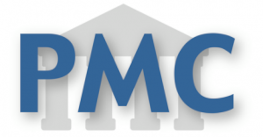Document detail
ID
oai:pubmedcentral.nih.gov:1113...
Topic
Systematic ReviewAuthor
Gharios, Maria Stenimahitis, Vasilios El-Hajj, Victor Gabriel Mahdi, Omar Ali Fletcher-Sandersjöö, Alexander Jabbour, Pascal Andersson, Magnus Hultling, Claes Elmi-Terander, Adrian Edström, ErikLangue
enEditor
BMJ Publishing Group
Category
BMJ Neurology Open
Year
2024
listing date
6/11/2024
Keywords
neurological scinf studies follow-up spontaneous review diagnostic scoreAbstract
BACKGROUND AND OBJECTIVES: Spontaneous spinal cord infarction (SCInf) is a rare condition resulting in acute neurological impairment.
Consensus on diagnostic criteria is lacking, which may present a challenge for the physician.
This review aims to analyse the current literature on spontaneous SCInf, focusing on epidemiology, the diagnostic process, treatment strategies and neurological outcomes.
METHODS: The study was performed in accordance with a previously published protocol.
PubMed, Web of Science and Embase were searched using the keywords ‘spontaneous’, ‘spinal cord’, ‘infarction’ and ‘ischaemic’.
The eligibility of studies was evaluated in two steps by multiple reviewers.
Data from eligible studies were extracted and systematically analysed.
RESULTS: 440 patients from 33 studies were included in this systematic review.
Analysis of vascular risk factors showed that hypertension was present in 40%, followed by smoking in 30%, dyslipidaemia in 29% and diabetes in 16%.
The severity of symptoms at admission according to the American Spinal Injury Association (ASIA) Impairment Scale was score A 19%, score B14%, score C36% and score D32%.
The mean follow-up period was 34.8 (±12.2) months.
ASIA score at follow-up showed score A 11%, score B 3%, score C 16%, score D 67% and score E 2%.
The overall mortality during the follow-up period was 5%.
When used, MRI with diffusion-weighted imaging (DWI) supported the diagnosis in 81% of cases.
At follow-up, 71% of the patients were able to walk with or without walking aids.
CONCLUSION: The findings suggest a significant role for vascular risk factors in the pathophysiology of spontaneous SCInf.
In the diagnostic workup, the use of DWI along with an MRI may help in confirming the diagnosis.
The findings at follow-up suggest that neurological recovery is to be expected, with the majority of patients regaining ambulation.
This systematic review highlights gaps in the literature and underscores the necessity for further research to establish diagnostic criteria and treatment guidelines.
Gharios, Maria,Stenimahitis, Vasilios,El-Hajj, Victor Gabriel,Mahdi, Omar Ali,Fletcher-Sandersjöö, Alexander,Jabbour, Pascal,Andersson, Magnus,Hultling, Claes,Elmi-Terander, Adrian,Edström, Erik, 2024, Spontaneous spinal cord infarction: a systematic review, BMJ Publishing Group

VR-Splatting: Foveated Radiance Field Rendering via 3D Gaussian Splatting and Neural Points
computer demands rendering neural
Attractor-Like Dynamics Extracted from Human Electrocorticographic Recordings Underlie Computational Principles of Auditory Bistable Perception
low-dimensional ecog subjects neural features dynamics perception

